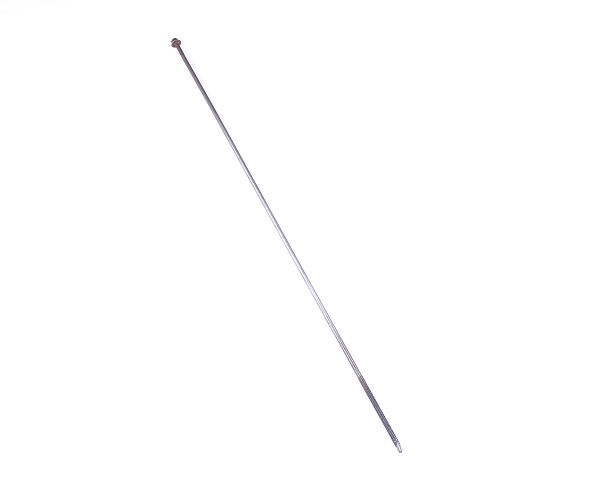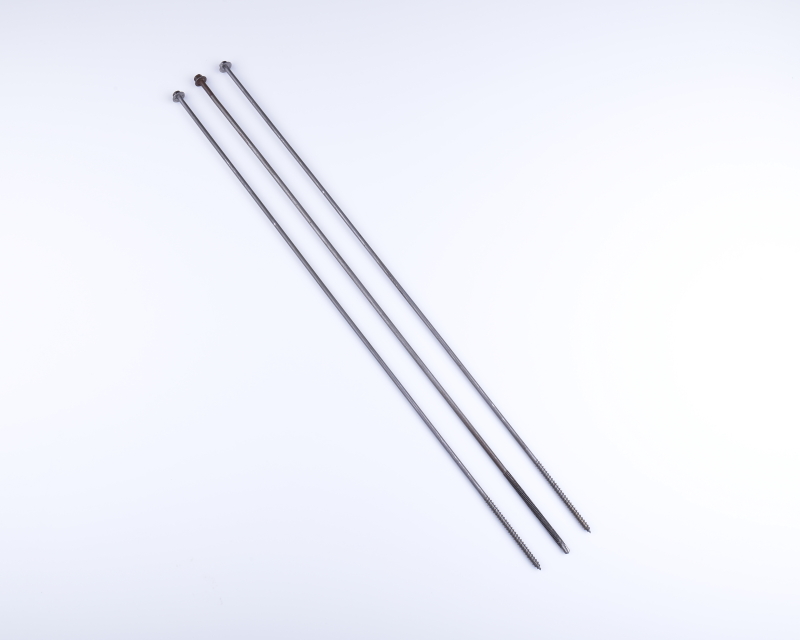自攻螺絲
 自攻螺絲
自攻螺絲
自攻螺絲(Self-Tapping Screws)是一種特殊設計的螺絲,具有尖銳的尖端和螺紋,使其能夠自行穿過材料,無需預先鑽孔。這些螺絲通常用於連接金屬、塑料和木材等不同材料,並且在許多建築、製造和DIY領域中廣泛應用。以下是有關自攻螺絲的更多信息:
自攻螺絲原理:自攻螺絲的尖端和螺紋設計允許它們在旋緊的同時切割材料,從而形成一個螺紋孔。這使得自攻螺絲能夠自行穿過材料,不需要預鑽孔。
材料:自攻螺絲通常用於金屬、塑料、木材、複合材料和其他多種材料。不同的自攻螺絲可能適用於不同的材料,因此在選擇時需要注意。
頭部型式:自攻螺絲的頭部可以有不同的型式,包括平頭、凸頭、六角頭、方頭等。選擇頭部型式取決於您的使用工具和需求。
螺紋型式:自攻螺絲的螺紋可以是粗螺紋或細螺紋,具體取決於固定力需求和材料。
適用場景:自攻螺絲常用於建築、車輛製造、家具製造、金屬工程、屋頂安裝、木工項目和家庭修繕等各種應用中。
防銹處理:在一些應用中,特別是在室外環境中,防銹處理的自攻螺絲可以增加其耐用性。
尺寸和長度:自攻螺絲具有不同的尺寸和長度,根據您的具體項目需求,需要選擇合適的尺寸。
安全注意事項:使用自攻螺絲時要小心,避免受傷。請穿戴個人保護裝備,特別是當使用電動工具時。
自攻螺絲是一種方便快捷的連接方式,特別適用於需要在不同材料之間建立強固連接的場合。選擇適當的自攻螺絲類型和尺寸是確保項目成功完成的重要一步。
自攻螺絲的適用性:自攻螺絲非常適用於快速固定和連接材料,特別是在需要快速安裝的情況下。它們通常比傳統的螺絲和螺栓更容易使用。
選擇適當的自攻螺絲:在選擇自攻螺絲時,要考慮所使用的材料類型和厚度。不同的自攻螺絲可能適用於不同的應用,因此確保選擇適當的型號非常重要。
自攻螺絲的安裝:自攻螺絲的安裝通常需要使用螺絲刀、螺絲批或電動工具,具體工具取決於自攻螺絲的頭部型式。在安裝前,確保螺絲能夠順利穿過材料,但不要將其旋緊過緊,以避免損壞。
自攻螺絲的固定力:自攻螺絲的固定力取決於其螺紋設計和材料。通常,螺紋較深或螺絲較大的自攻螺絲具有較高的固定力。
自攻螺絲的再使用性:自攻螺絲通常是一次性使用的,因為它們的螺紋和尖端在使用後可能會變鈍。在需要拆卸的情況下,通常需要替換自攻螺絲。
特殊自攻螺絲:某些自攻螺絲設計用於特殊應用,例如屋頂自攻螺絲、自攻釘螺絲、自攻螺絲插頭等。這些自攻螺絲具有不同的特性,以滿足特定需求。
自攻螺絲的耐久性:自攻螺絲的耐久性取決於使用材料、環境和正確的安裝。適當的保養和注意維護可以延長自攻螺絲的壽命。
自攻螺絲的尺寸標記:自攻螺絲的尺寸通常在其包裝上標明,以便選擇適當的螺絲。您可以查看包裝上的規格和尺寸信息。
自攻螺絲是許多項目中的寶貴工具,它們可以節省時間並使連接材料變得更加容易。選擇適當的自攻螺絲型號和尺寸非常重要,
自攻螺絲的應用:自攻螺絲廣泛應用於各種領域,包括建築、汽車、電子、木工、家具製造、金屬工程、家庭維修等。它們是一種多功能的連接元件,可用於許多不同的工程和項目。
自攻螺絲的抗震性:一些自攻螺絲設計用於抵抗震動和振動,這在需要穩固連接的應用中特別重要,例如汽車和機械設備。
自攻螺絲的磁性:由於自攻螺絲通常由鋼製成,因此它們具有一定程度的磁性。這對於需要磁性連接的應用非常有用。
不同頭部槽位:自攻螺絲的頭部槽位可以是菲利普斯(十字)、平頭、六角、方頭等,具體取決於頭部的型式和工具的選擇。
自攻螺絲的密度:不同自攻螺絲的螺紋密度可能不同,這可以影響其穿過材料的速度和固定力。
選擇適當的自攻螺絲材料:根據具體應用需求,可以選擇不同材料的自攻螺絲,包括鋼、不銹鋼、黃銅、銅、塑料等。
自攻螺絲的彈性:某些自攻螺絲設計具有彈性,這意味著它們在連接部位能夠具有一定的彈性,以吸收振動和變形。
自攻螺絲的專用用途:有一些自攻螺絲設計專用於特定的應用,例如屋頂自攻螺絲、自攻螺絲插頭、金屬薄板自攻螺絲等。
自攻螺絲的選擇標準:根據項目需求和應用標準,選擇適當的自攻螺絲以確保連接的強度和安全性。
無論您是專業工人還是進行DIY項目,自攻螺絲都是一種非常實用的連接工具,可以用於各種不同的應用中。請記住選擇適當的自攻螺絲型號、尺寸和材料非常重要,以確保項目的成功和穩固連接。
自攻螺絲的尖端設計:自攻螺絲的尖端設計可以根據不同的應用和需求而變化。一些自攻螺絲具有尖細的尖端,適用於較薄的材料,而其他自攻螺絲可能具有鈍一些的尖端,用於穿過較厚或硬的材料。
預防自攻螺絲斷裂:在將自攻螺絲旋入材料時,要謹慎操作,避免過度旋緊,以免螺絲斷裂。尤其是在使用電動工具時,要特別小心。
自攻螺絲的潛力問題:在某些情況下,使用自攻螺絲可能會導致材料分裂或裂紋,特別是在較脆弱的木材上。在這些情況下,可能需要預先鑽孔以避免問題。
安裝的順序:如果需要連接多個材料,請按照正確的順序和方法安裝自攻螺絲,以確保穩固的連接。
自攻螺絲的特殊應用:有些自攻螺絲被設計用於特殊應用,例如用於連接金屬屋頂、用於汽車修理、用於製造機械部件等。
維護和保養:如果自攻螺絲被用於戶外或受潮的環境中,要注意定期檢查並替換受損或生銹的螺絲,以確保連接的穩固性。
避免混淆:在進行工程項目時,確保您不要混淆自攻螺絲與其他類型的螺絲,以確保正確的連接。
選擇品牌和質量:選擇知名品牌的自攻螺絲,以確保質量和性能可靠。
自攻螺絲是一種多功能的連接工具,可以在各種應用中使用。了解其適當使用和注意事項,以及根據具體項目需求選擇適當的型號和尺寸,將有助於確保工程的成功和安全。
頭部形狀:自攻螺絲的頭部形狀可以是圓頭、平頭、圓柱頭、六角頭等。不同的頭部形狀提供了不同的外觀和功能,可以根據項目需求進行選擇。
自攻螺絲的儲存:在儲存自攻螺絲時,要確保它們遠離潮濕和極端溫度,以防止生銹和變形。
自攻螺絲的顏色:一些自攻螺絲具有特殊的顏色或塗層,用於外觀要求較高的應用,例如家具或裝飾性工程。
自攻螺絲的使用工具:選擇適當的使用工具,如螺絲刀、螺絲批、電動螺絲刀等,可以提高自攻螺絲的安裝效率。
自攻螺絲的螺紋型式:螺絲的螺紋型式可以是全螺紋、部分螺紋或細螺紋,具體取決於固定的需求和應用。
自攻螺絲的包裝方式:自攻螺絲可以以個別螺絲、螺絲帶、螺絲盒或螺絲桶等不同的包裝方式提供,以滿足不同用戶的需求。
自攻螺絲的設計創新:一些自攻螺絲具有創新的設計,例如自鑲嵌式墊片的螺絲,可以用於提供額外的抗漏水功能。
環保自攻螺絲:對於對環保問題感興趣的用戶,有一些自攻螺絲是經過環保處理的,以減少對環境的影響。
自攻螺絲的扭矩要求:在使用自攻螺絲時,要注意正確的扭矩要求,以確保它們被正確安裝並達到所需的連接強度。
無論您是專業工人還是進行DIY項目,自攻螺絲是一種多功能的連接工具,可以應對各種不同的應用。選擇適當的自攻螺絲型號、尺寸、頭部和特性,是確保項目成功和穩固連接的關鍵。如果您對特定應用或自攻螺絲的進一步問題有任何疑問,請隨時提供更多詳細信息,我將竭盡所能提供進一步的幫助。
Self-Tapping Screws are specially designed screws with a sharp tip and threads that allow them to penetrate materials on their own without the need for pre-drilling holes. These screws are commonly used to join disparate materials such as metal, plastic, and wood, and are widely used in many construction, manufacturing, and DIY fields. Here's more information about self-tapping screws:
How self-tapping screws work: The tip and thread design of self-tapping screws allow them to cut material while tightening, creating a threaded hole. This allows the self-tapping screw to penetrate the material on its own without the need for pre-drilling holes.
Materials: Self-tapping screws are commonly used in metal, plastic, wood, composites, and a variety of other materials. Different self-tapping screws may be suitable for different materials, so you need to pay attention when choosing.
Head type: The head of self-tapping screws can have different types, including flat head, convex head, hexagonal head, square head, etc. Choosing a head style depends on your tools and needs.
Thread Type: The threads of self-tapping screws can be coarse or fine, depending on the holding force requirements and material.
Where to use it: Self-tapping screws are commonly used in a variety of applications including construction, vehicle manufacturing, furniture manufacturing, metal engineering, roofing installations, carpentry projects and home improvements.
Anti-rust treatment: In some applications, especially in outdoor environments, anti-rust treatment of self-tapping screws can increase their durability.
Size and Length: Self-tapping screws come in different sizes and lengths, depending on your specific project needs, choose the right size.
Safety precautions: Be careful when using self-tapping screws to avoid injury. Wear personal protective equipment, especially when using power tools.
Self-tapping screws are a convenient and fast connection method, especially suitable for situations where strong connections between different materials need to be established. Choosing the appropriate self-tapping screw type and size is an important step in ensuring a successful project completion.
Suitability of self-tapping screws: Self-tapping screws are ideal for quickly fastening and joining materials, especially where quick installation is required. They are generally easier to use than traditional screws and bolts.
Choose the right self-tapping screws: When choosing self-tapping screws, consider the type and thickness of the material being used. Different self-tapping screws may be suitable for different applications, so it's important to make sure you choose the appropriate model.
Installation of self-tapping screws: The installation of self-tapping screws usually requires the use of a screwdriver, screwdriver or power tool, depending on the head type of the self-tapping screw. Before installing, make sure the screws pass smoothly through the material, but do not overtighten them to avoid damage.
The holding power of self-tapping screws: The holding power of self-tapping screws depends on their thread design and material. Generally, self-tapping screws with deeper threads or larger screws have higher holding power.
Reusability of self-tapping screws: Self-tapping screws are typically single-use because their threads and tips can become dull after use. In cases where disassembly is required, self-tapping screws usually need to be replaced.
Special Self-Tapping Screws: Certain self-tapping screws are designed for special applications such as roofing self-tapping screws, self-tapping screws, self-tapping screw plugs, etc. These self-tapping screws come in different properties to suit specific needs.
Durability of self-tapping screws: The durability of self-tapping screws depends on the materials used, the environment and proper installation. Proper care and attention to maintenance can extend the life of self-tapping screws.
Size markings for self-tapping screws: The dimensions of self-tapping screws are usually marked on their packaging to facilitate selection of the appropriate screw. You can check the specifications and size information on the packaging.
Self-tapping screws are valuable tools in many projects, they save time and make joining materials easier. It is very important to choose the appropriate self-tapping screw type and size.
Applications of self-tapping screws: Self-tapping screws are widely used in various fields, including construction, automotive, electronics, woodworking, furniture manufacturing, metal engineering, home repair, etc. They are a versatile joining element that can be used in many different projects and projects.
Shock resistance of self-tapping screws: Some self-tapping screws are designed to resist shock and vibration, which is particularly important in applications that require a secure connection, such as automotive and mechanical equipment.
Magnetism of Self-Tapping Screws: Since self-tapping screws are usually made of steel, they are somewhat magnetic. This is useful for applications requiring magnetic connections.
Different head slots: The head slots of self-tapping screws can be Phillips (cross), flat head, hexagonal, square head, etc., depending on the head type and tool selection.
Density of self-tapping screws: Different self-tapping screws can have different thread densities, which can affect their speed through material and holding power.
Choose the appropriate self-tapping screw material: Depending on the specific application needs, you can choose self-tapping screws from different materials, including steel, stainless steel, brass, copper, plastic, etc.
Resilience of self-tapping screws: Some self-tapping screws are designed to be resilient, which means they can have a certain amount of elasticity at the connection site to absorb vibration and deformation.
Special uses of self-tapping screws: There are some self-tapping screws designed for specific applications, such as roofing self-tapping screws, self-tapping screw plugs, sheet metal self-tapping screws, etc.
Selection criteria for self-tapping screws: Based on project needs and application standards, select appropriate self-tapping screws to ensure the strength and safety of the connection.
Whether you are a professional worker or working on a DIY project, self-tapping screws are a very useful joining tool that can be used in a variety of different applications. Remember that it is important to select the appropriate self-tapping screw model, size, and material to ensure a successful project and a secure connection.
Tip Design of Self-Tapping Screws: The tip design of self-tapping screws can vary according to different applications and needs. Some self-tapping screws have a tapered tip for use in thinner materials, while other self-tapping screws may have a blunter tip for cutting through thicker or harder materials.
Prevent self-tapping screws from breaking: When screwing self-tapping screws into materials, be careful and avoid over-tightening to avoid screw breakage. Be especially careful when using power tools.
Potential Issues with Self-Tapping Screws: In some cases, using self-tapping screws can cause the material to split or crack, especially on weaker woods. In these cases, pre-drilling may be necessary to avoid problems.
Sequence of installation: If multiple materials need to be connected, install self-tapping screws in the correct order and method to ensure a solid connection.
Special Applications of Self-Tapping Screws: Some self-tapping screws are designed for special applications such as for joining metal roofs, for car repairs, for manufacturing mechanical parts, etc.
Maintenance and care: If self-tapping screws are used outdoors or in a humid environment, pay attention to regular inspection and replacement of damaged or rusty screws to ensure the stability of the connection.
Avoid confusion: When working on a construction project, make sure you don't confuse self-tapping screws with other types of screws to ensure proper connections.
Choose brand and quality: Choose self-tapping screws from well-known brands to ensure reliable quality and performance.
Self-tapping screws are a versatile joining tool that can be used in a variety of applications. Understanding their proper use and precautions, as well as selecting the appropriate model and size based on specific project needs, will help ensure a successful and safe project.
Head shape: The head shape of self-tapping screws can be round head, flat head, cylindrical head, hexagonal head, etc. Different head shapes offer different looks and functions and can be selected based on project needs.
Storage of self-tapping screws: When storing self-tapping screws, make sure they are kept away from moisture and extreme temperatures to prevent rust and deformation.
Self-tapping screw colors: Some self-tapping screws are available in special colors or coatings for applications where appearance is critical, such as furniture or decorative projects.
Tools for using self-tapping screws: Choosing appropriate tools, such as screwdrivers, screwdrivers, electric screwdrivers, etc., can improve the installation efficiency of self-tapping screws.
Thread pattern of self-tapping screws: The thread pattern of screws can be fully threaded, partially threaded or finely threaded, depending on the fixing needs and application.
Packaging methods of self-tapping screws: Self-tapping screws can be provided in different packaging methods such as individual screws, screw tapes, screw boxes or screw barrels to meet the needs of different users.
Design innovation of self-tapping screws: Some self-tapping screws have innovative designs, such as screws with self-embedded gaskets, which can be used to provide additional anti-leakage capabilities.
Environmentally friendly self-tapping screws: For users who are interested in environmental issues, some self-tapping screws have been treated with environmental protection to reduce their impact on the environment.
Torque requirements for self-tapping screws: When using self-tapping screws, pay attention to the correct torque requirements to ensure that they are installed correctly and achieve the required connection strength.
Whether you're a professional worker or working on a DIY project, self-tapping screws are a versatile joining tool that can handle a variety of different applications. Selecting the appropriate self-tapping screw type, size, head and characteristics is key to ensuring a successful project and a secure connection. If you have any questions about a specific application or further questions about self-tapping screws, please feel free to provide more details and I will do my best to provide further assistance.

